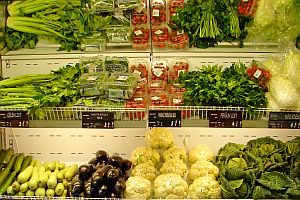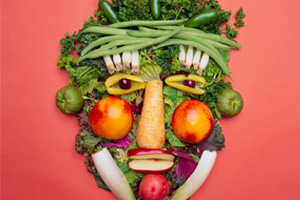Homemade Vegetable Wash/Preserver That Works! (Spray or Soak)
[amd-zlrecipe-recipe:15]
[amd-zlrecipe-recipe:15]
[amd-zlrecipe-recipe:13]
[amd-zlrecipe-recipe:11]

Getting adequate amounts of fiber in your diet is important for a variety of reasons. The primary ones are that it improves digestion and contributes to lowering your risk of contracting chronic diseases such as diabetes, cancer and heart disease. The FDA recommends that adults get at least 25 to 30 grams in their diet every day. However, our typical western diet, which is high in refined grains and processed food, provides the average person only about 15 grams of fiber per day.
There are two different types of dietary fiber: soluble and insoluble, each of which fulfill an important task. Soluble fiber dissolves in water (and our stomach’s digestive juices), transforming into a gel-like substance that helps to lower levels of “bad” LDL cholesterol and reduce high blood sugar. The primary purpose of insoluble fiber is to work as an indigestible bulking agent to keeps things moving along the digestive tract, which aids elimination and reduces the risk of constipation, hemorrhoids and diverticulosis. Fiber may also help you to lose weight, and is important in maintaining general bowel health.
Among the best sources of both soluble and insoluble fiber are the following:
So be sure to add more from the above list to your weekly menu and enjoy the many benefits that increased fiber has to offer! If you have questions about your diet choices, always remember that you can call either of our Billings offices and schedule an appointment to meet with Dr. Oblander or a member of our staff!

We’ve been told for years – and by pretty much everyone involved with either nutrition or health care – that eating more fruits and vegetables is good for you and can improve your life. Well, it turns out that these people weren’t telling us the whole story. Eating more fresh fruits and vegetables can actually extend your life, and add years to it.
That’s the message of a study conducted at University College London, and published recently in the Journal of Epidemiology & Community Health. The researchers used data from the Health Survey for England to analyze the eating habits of over 65,000 people considered representative of the English population between the years 2001 and 2013. What they found was that the more fresh fruits and vegetables these people ate – at any age – the less likely they were to die.
This study is the first to compare the consumption of fruits and vegetables with rates of cancer, heart disease, and all-cause deaths in a nationally-representative population. It is also the first to link health benefits to per-portion quantities of fruits and vegetables, and the first to identify the types of fruits and vegetables with the most benefit.
The figures are compelling and consistent. Eating 1-3 servings of fresh fruit and vegetables per day decreases your risk of death in the three categories (cancer, heart disease, and all causes) by 11%, 9%, and 14%, respectively, compared with eating none. Eating 3-5 servings per day decreases these risks by 19%, 18%, and 29%, respectively. Eating 7 or more servings of fruit and vegetables per day decreases your risk of dying from these causes by a whopping 25%, 31%, and 42%, respectively.
The researchers also found that fresh vegetables have a more significant effect on longevity and lowered mortality risk than fruits, with each daily vegetable portion added to the diet lowering mortality risk by 16%. Eating salad lowered mortality risk by 13% for each portion added daily, and fruit lowered mortality risk by 4% for each added portion.
Interestingly, the researchers found no benefits to longevity from fruit juice, as opposed to fresh, whole fruit. Furthermore, canned or frozen fruit appeared to actually increase risk of death by 17% per portion. The researchers attributed this to the fact that most canned and frozen fruits contain high sugar levels, and that the negative health impacts of the sugar may outweigh any benefits.
Lead author of the study Dr. Oyinlola Oyebode says of the findings, “We all know that eating fruit and vegetables is healthy, but the size of the effect is staggering. The clear message here is that the more fruit and vegetables you eat, the less likely you are to die at any age. Vegetables have a larger effect than fruit, but fruit still makes a real difference. If you’re happy to snack on carrots or other vegetables, then that is a great choice but if you fancy something sweeter, a banana or any fruit will also do you good.”